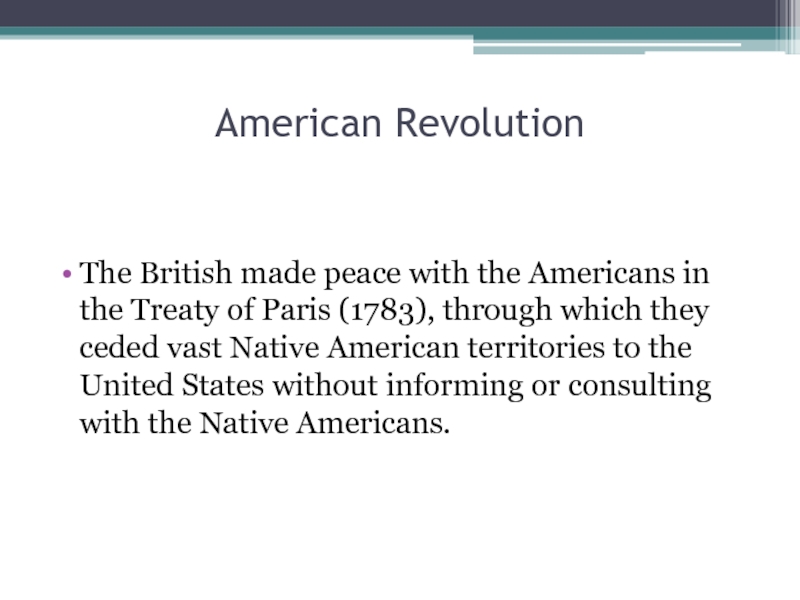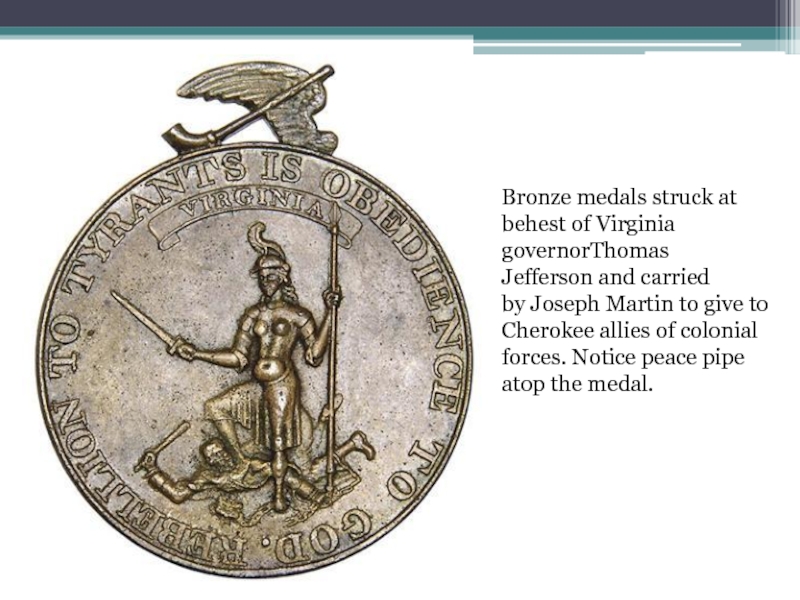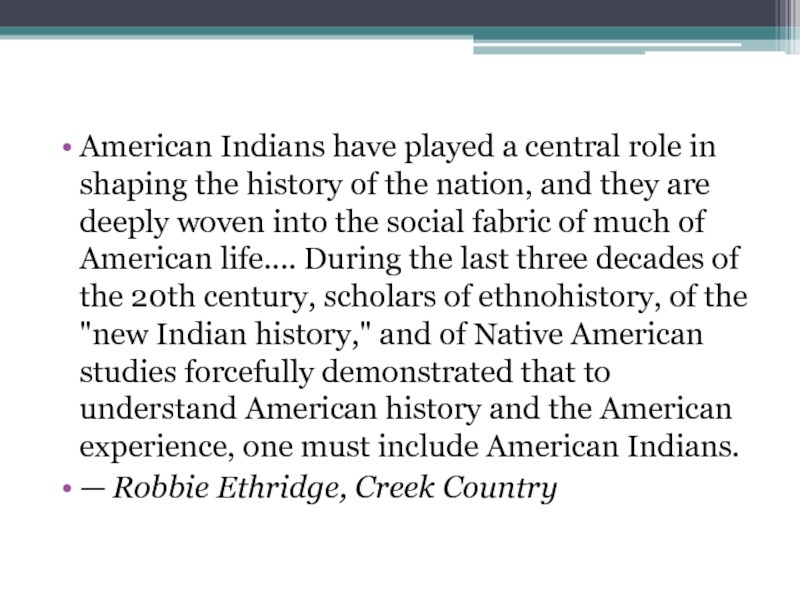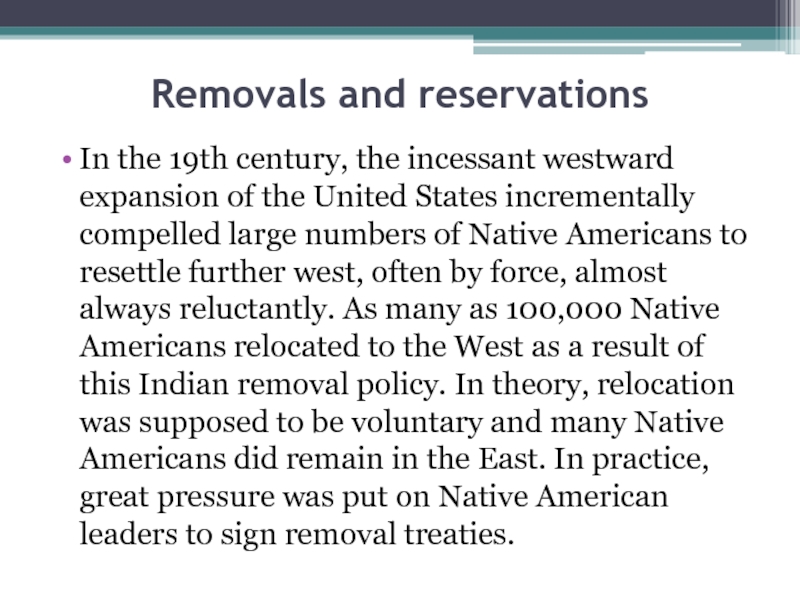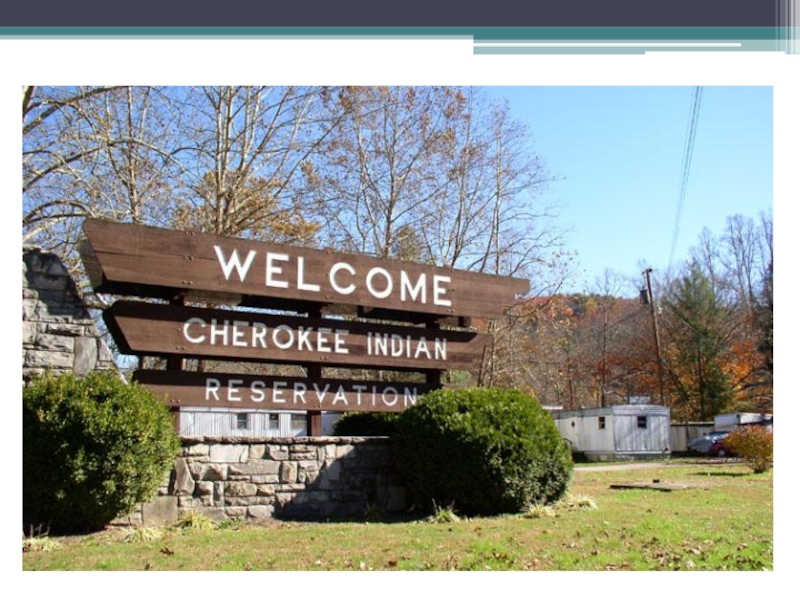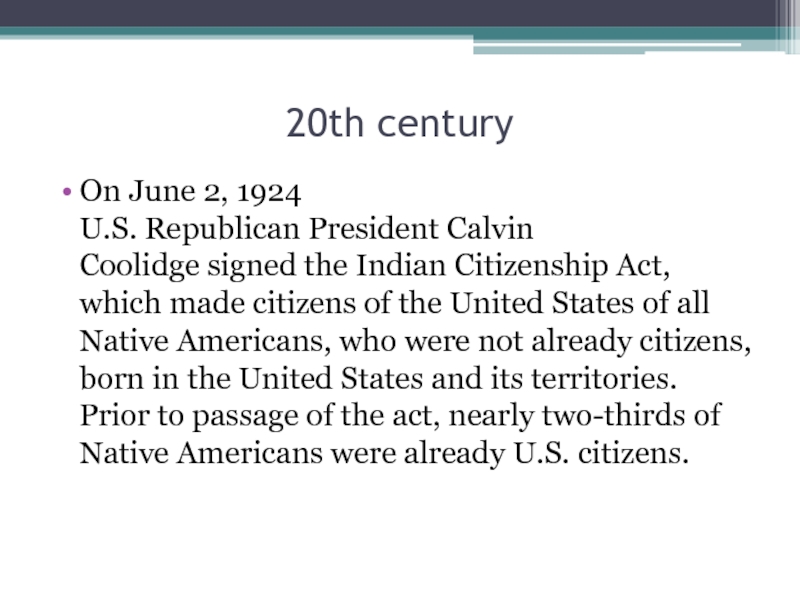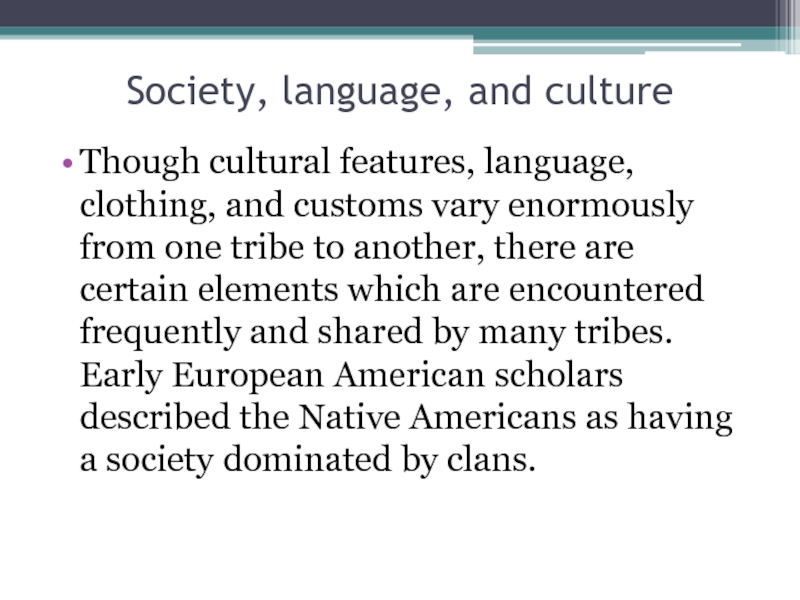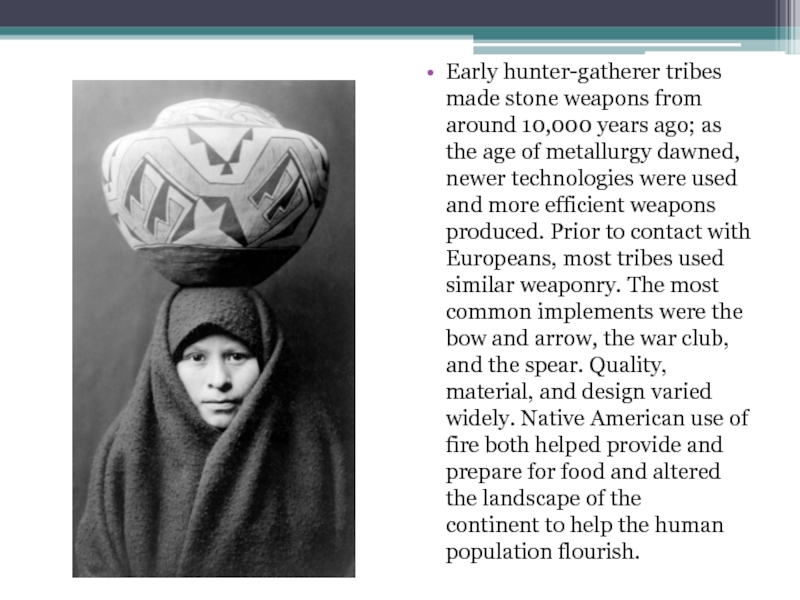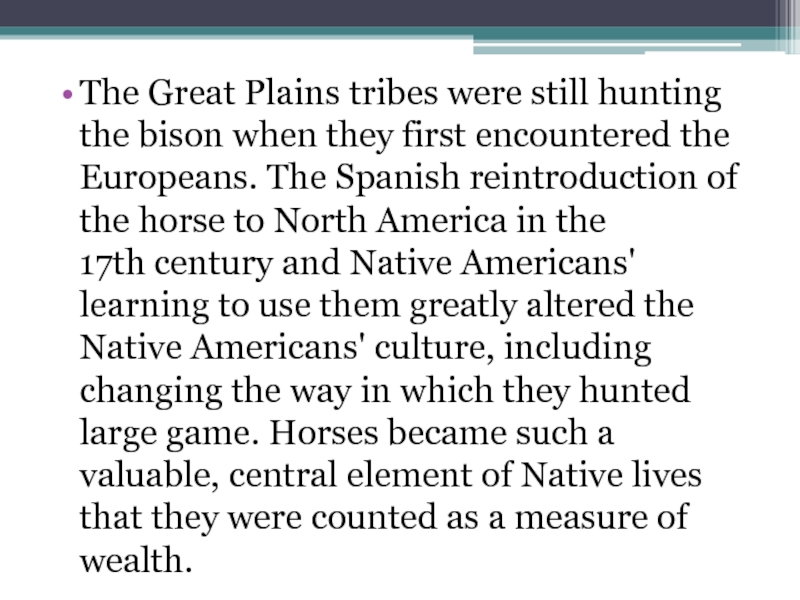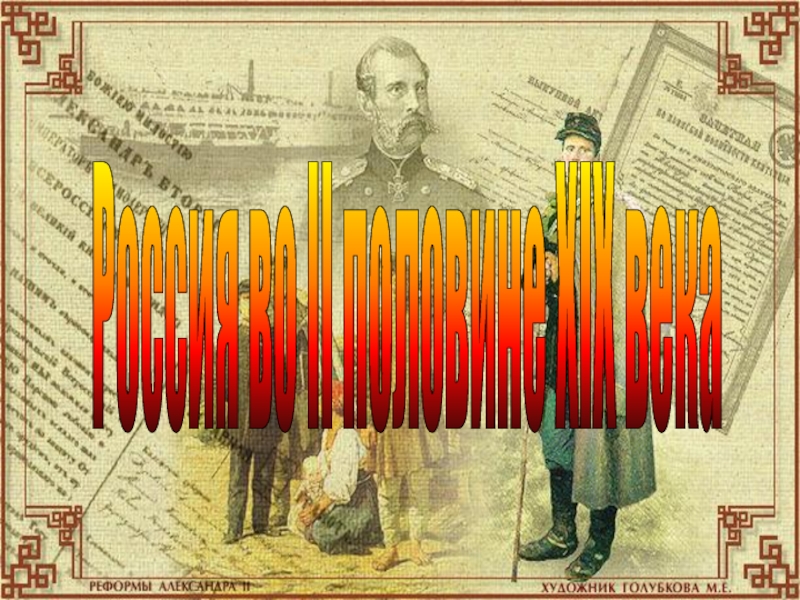- Главная
- Разное
- Дизайн
- Бизнес и предпринимательство
- Аналитика
- Образование
- Развлечения
- Красота и здоровье
- Финансы
- Государство
- Путешествия
- Спорт
- Недвижимость
- Армия
- Графика
- Культурология
- Еда и кулинария
- Лингвистика
- Английский язык
- Астрономия
- Алгебра
- Биология
- География
- Детские презентации
- Информатика
- История
- Литература
- Маркетинг
- Математика
- Медицина
- Менеджмент
- Музыка
- МХК
- Немецкий язык
- ОБЖ
- Обществознание
- Окружающий мир
- Педагогика
- Русский язык
- Технология
- Физика
- Философия
- Химия
- Шаблоны, картинки для презентаций
- Экология
- Экономика
- Юриспруденция
Native аmericans in the United States презентация
Содержание
- 1. Native аmericans in the United States
- 2. In the United States, Native Americans are
- 3. The terms Native Americans use to refer
- 5. Settlement of the Americas Three major
- 6. Settlement of the Americas Current understanding
- 7. In the 2000s, researchers sought to
- 8. Chronology
- 9. The first is the short chronology theory, based
- 10. European exploration and colonization After 1492 European exploration and
- 11. Impact on native populations From the
- 12. Europeans at that time had patriarchal cultures
- 13. Estimating the number of Native Americans living
- 14. Foundations for freedom Some Europeans considered
- 15. Natural freedom is the only object of
- 16. American Revolution The British made peace
- 17. Bronze medals struck at behest of Virginia
- 18. American Indians have played a central role
- 19. Removals and reservations In the 19th
- 21. 20th century On June 2, 1924
- 22. Society, language, and culture Though cultural
- 23. Early hunter-gatherer tribes made stone weapons from around 10,000 years
- 24. The Great Plains tribes were still hunting
- 25. Presentation by Sofia Otnyakina, 2B
Слайд 2In the United States, Native Americans are considered to be people
whose pre-Columbian ancestors were indigenous to the lands within the nation's modern boundaries. These peoples were composed of numerous distinct tribes, bands, and ethnic groups, and many of these groups survive intact today as sovereign nations.
Слайд 3The terms Native Americans use to refer to themselves vary regionally
and generationally, with many older Native Americans self-identifying as "Indians" or "American Indians", while younger Native Americans often identify as "Indigenous" or "Aboriginal." Which terms should be used to refer to Native Americans has at times been controversial.
Слайд 5Settlement of the Americas
Three major migrations occurred, as traced by linguistic
and genetic data; the early Paleoamericans soon spread throughout the Americas, diversifying into many hundreds of culturally distinct nations and tribes.By 8000 BCE the North American climate was very similar to today's. A study published in 2012 gives genetic backing to the 1986 theory put forward by linguist Joseph Greenberg that the Americas must have been populated in three waves, based on language differences
Слайд 6Settlement of the Americas
Current understanding of the settlement of the Americas (human migration
to and throughout the American continents) derives from advances in four interrelated disciplines: archaeology, Pleistocene geology, physical anthropology, and DNA analysis. While there is general agreement that the Americas were first settled from Asia, the pattern of migration, its timing, and the place(s) of origin in Asia of the peoples who migrated to the Americas remain unclear.
Слайд 7
In the 2000s, researchers sought to use familiar tools to validate
or reject established theories, such as Clovis first.The archeological evidence suggests that the Paleo-Indians' first dispersal into the Americas occurred during the end of the last glacial period or, more specifically, what is known as the Last Glacial Maximum, around 16,500–13,000 years ago.
The settlement of the Americas is of intense interest to archaeologists and anthropologists.
The settlement of the Americas is of intense interest to archaeologists and anthropologists.
Слайд 9 The first is the short chronology theory, based on the concept that
the first migration into the New World occurred after the LGM, which went into decline after about 19k cal years BP, then was followed by successive waves of immigrants. The second is the long chronology theory,which proposes that the first group of people entered the Americas at a much earlier date, possibly 21k–40k cal years BP,with a much later second wave of immigrants.Further controversy has been generated as age-dating of archaeosites in the Americas and the timing of the opening of the ice-free corridor have challenged the Clovis First theory, which dominated thinking on New World anthropology for much of the 20th century.
Слайд 10European exploration and colonization
After 1492 European exploration and colonization of the Americas revolutionized how
the Old and New Worlds perceived themselves. The subsequent European colonists in North America often rationalized their expansion of empire with the assumption that they were saving a barbaric, pagan world by spreading Christian civilization.
Слайд 11Impact on native populations
From the 16th through the 19th centuries, the population
of Native Americans declined in the following ways: epidemic diseasesbrought from Europe; violence and warfare at the hands of European explorers and colonists, as well as between tribes; displacement from their lands; internal warfare, enslavement; and a high rate of intermarriage.
Слайд 12Europeans at that time had patriarchal cultures and had developed concepts
of individual property rights with respect to land that were extremely different. The differences in cultures between the established Native Americans and immigrant Europeans, as well as shifting alliances among different nations in times of war, caused extensive political tension, ethnic violence, and social disruption.
Слайд 13Estimating the number of Native Americans living in what is today
the United States of America before the arrival of the European explorers and settlers has been the subject of much debate. While it is difficult to determine exactly how many Natives lived in North America before Columbus, estimates range from a low of 2.1 million (Ubelaker 1976) to 7 million people (Russell Thornton). Native population of the present-day United States had declined to approximately 600,000, and only 250,000 Native Americans remained in the 1890s.
Слайд 14Foundations for freedom
Some Europeans considered Native American societies to be representative
of a golden age known to them only in folk history. The political theorist Jean Jacques Rousseau wrote that the idea of freedom and democratic ideals was born in the Americas because "it was only in America" that Europeans from 1500 to 1776 knew of societies that were "truly free."
Слайд 15Natural freedom is the only object of the policy of the
[Native Americans]; with this freedom do nature and climate rule alone amongst them ... [Native Americans] maintain their freedom and find abundant nourishment... [and are] people who live without laws, without police, without religion.
— Jean Jacques Rousseau
— Jean Jacques Rousseau
Слайд 16American Revolution
The British made peace with the Americans in the Treaty of
Paris (1783), through which they ceded vast Native American territories to the United States without informing or consulting with the Native Americans.
Слайд 17Bronze medals struck at behest of Virginia governorThomas Jefferson and carried by Joseph
Martin to give to Cherokee allies of colonial forces. Notice peace pipe atop the medal.
Слайд 18American Indians have played a central role in shaping the history
of the nation, and they are deeply woven into the social fabric of much of American life.... During the last three decades of the 20th century, scholars of ethnohistory, of the "new Indian history," and of Native American studies forcefully demonstrated that to understand American history and the American experience, one must include American Indians.
— Robbie Ethridge, Creek Country
— Robbie Ethridge, Creek Country
Слайд 19Removals and reservations
In the 19th century, the incessant westward expansion of the
United States incrementally compelled large numbers of Native Americans to resettle further west, often by force, almost always reluctantly. As many as 100,000 Native Americans relocated to the West as a result of this Indian removal policy. In theory, relocation was supposed to be voluntary and many Native Americans did remain in the East. In practice, great pressure was put on Native American leaders to sign removal treaties.
Слайд 2120th century
On June 2, 1924 U.S. Republican President Calvin Coolidge signed the Indian Citizenship Act, which
made citizens of the United States of all Native Americans, who were not already citizens, born in the United States and its territories. Prior to passage of the act, nearly two-thirds of Native Americans were already U.S. citizens.
Слайд 22Society, language, and culture
Though cultural features, language, clothing, and customs vary
enormously from one tribe to another, there are certain elements which are encountered frequently and shared by many tribes. Early European American scholars described the Native Americans as having a society dominated by clans.
Слайд 23Early hunter-gatherer tribes made stone weapons from around 10,000 years ago; as the age
of metallurgy dawned, newer technologies were used and more efficient weapons produced. Prior to contact with Europeans, most tribes used similar weaponry. The most common implements were the bow and arrow, the war club, and the spear. Quality, material, and design varied widely. Native American use of fire both helped provide and prepare for food and altered the landscape of the continent to help the human population flourish.
Слайд 24The Great Plains tribes were still hunting the bison when they
first encountered the Europeans. The Spanish reintroduction of the horse to North America in the 17th century and Native Americans' learning to use them greatly altered the Native Americans' culture, including changing the way in which they hunted large game. Horses became such a valuable, central element of Native lives that they were counted as a measure of wealth.

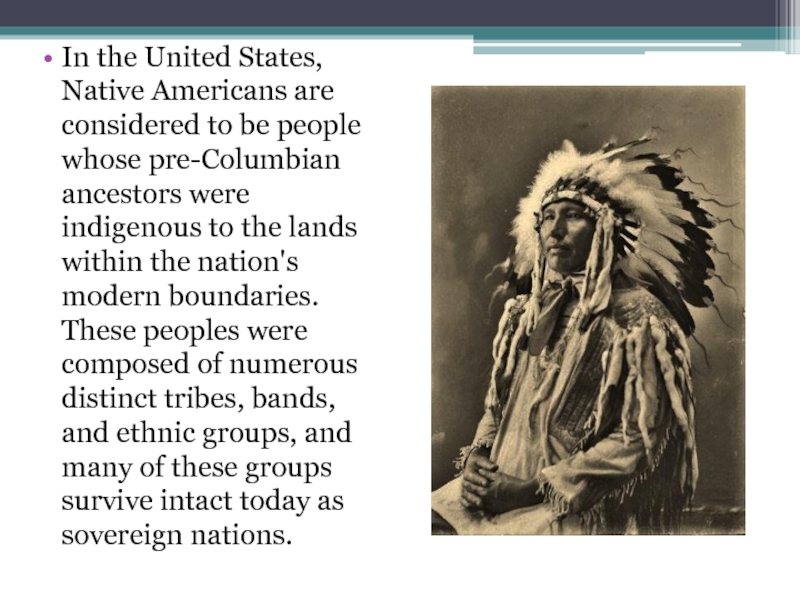
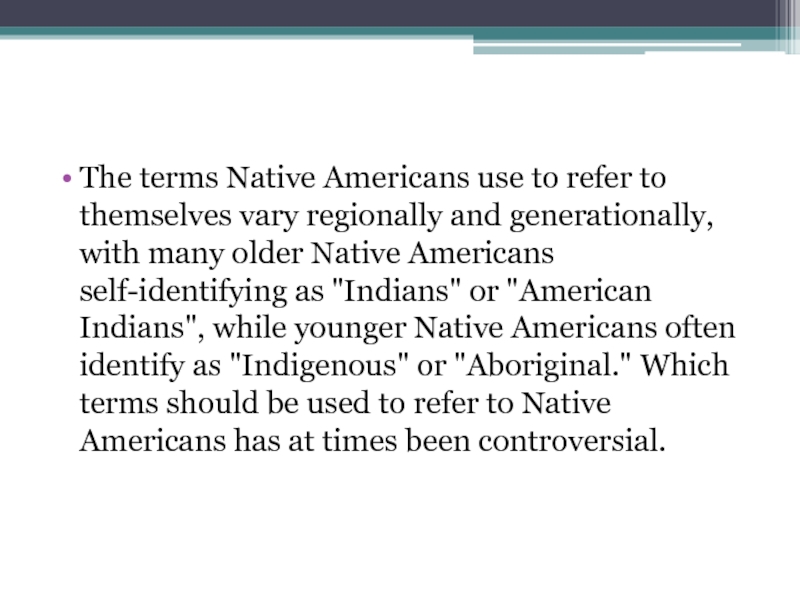
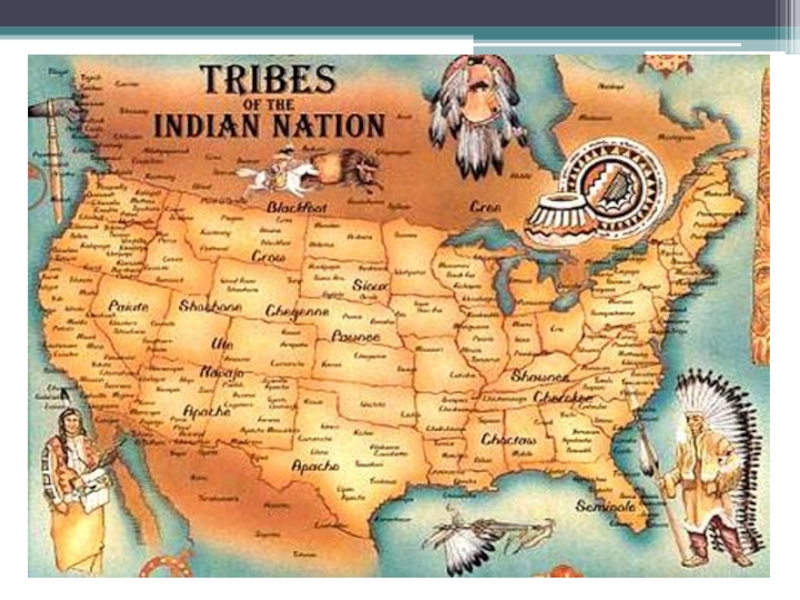
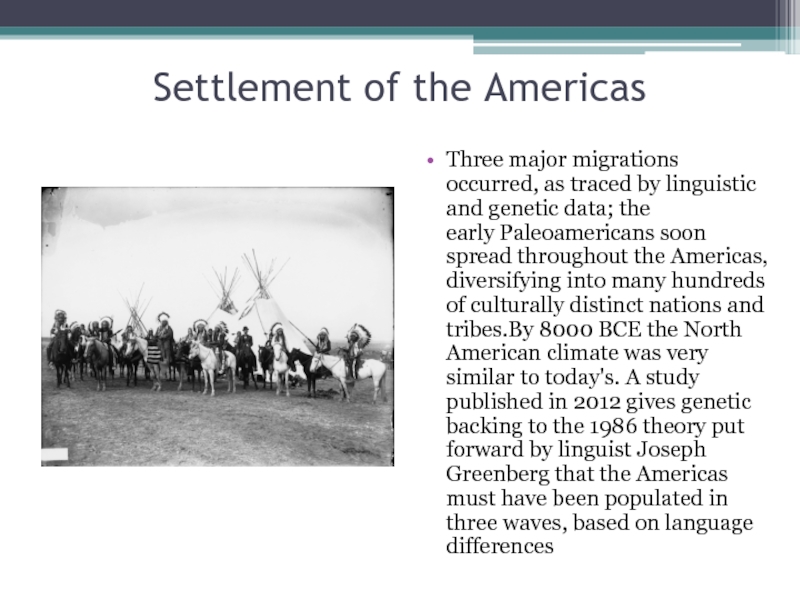
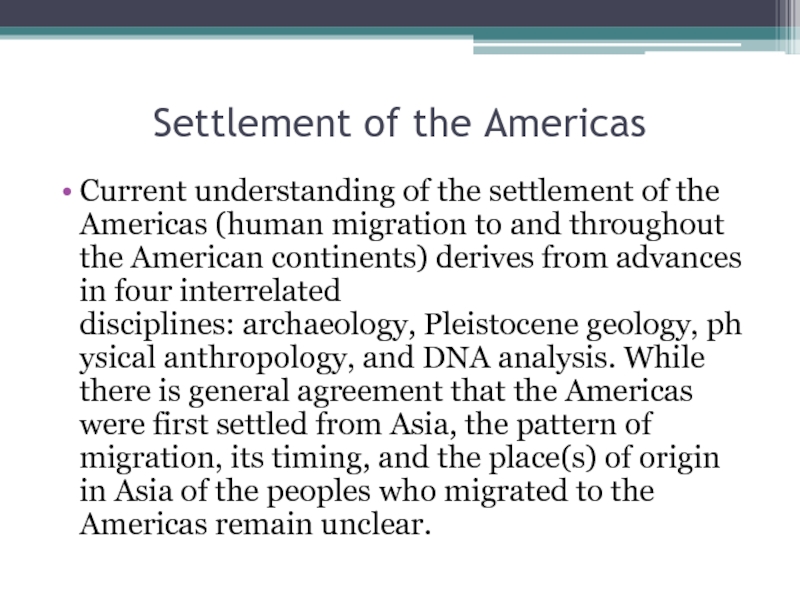
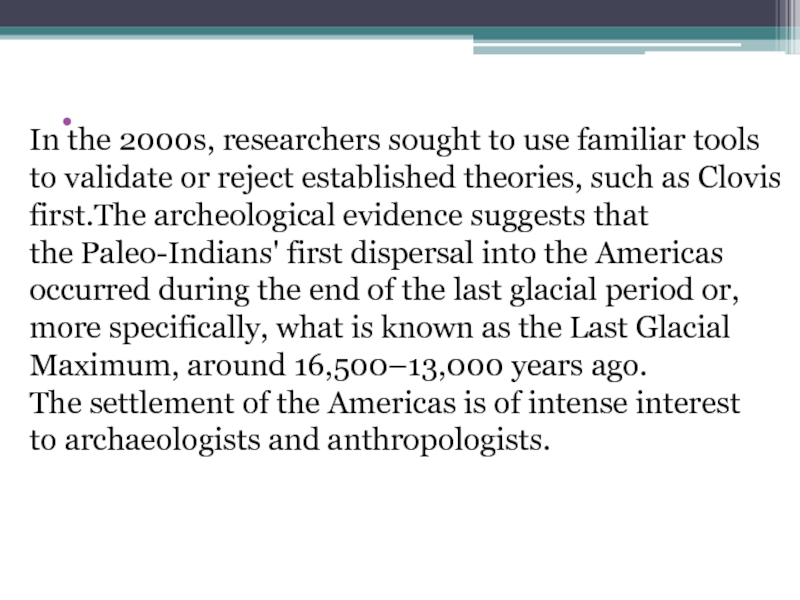
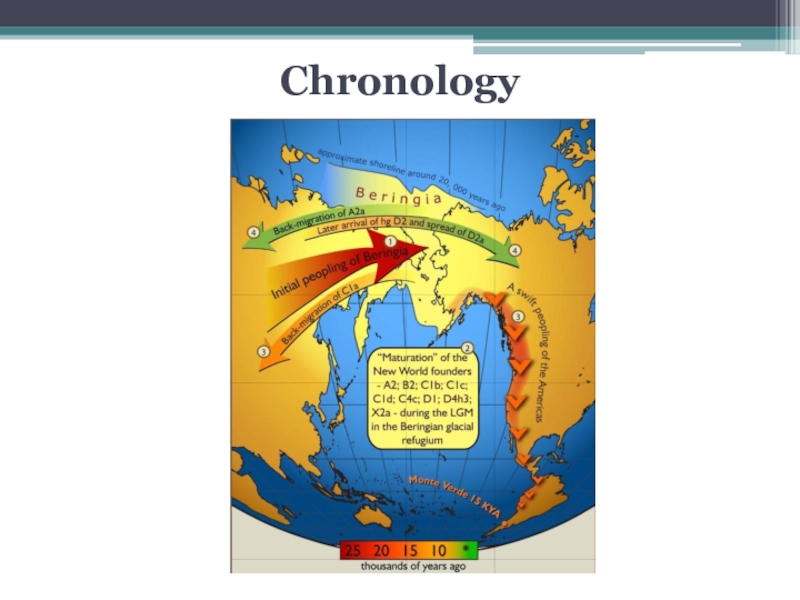
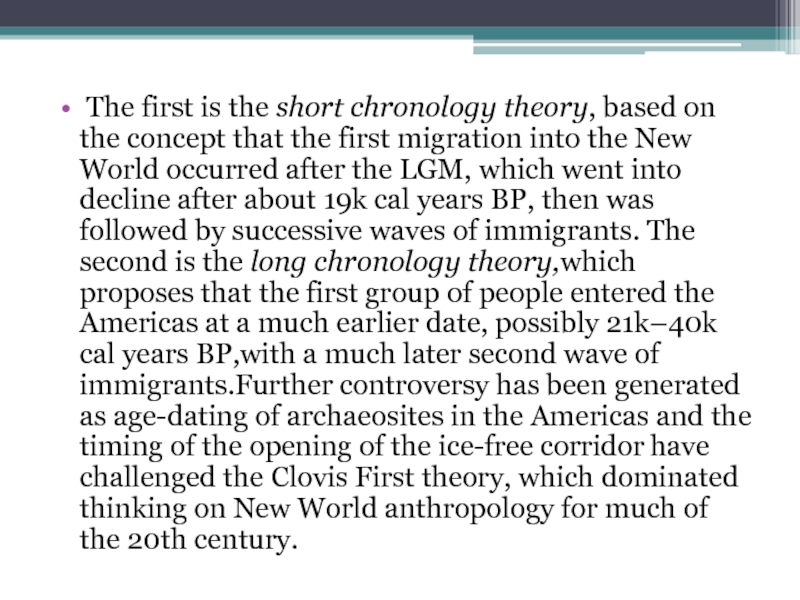
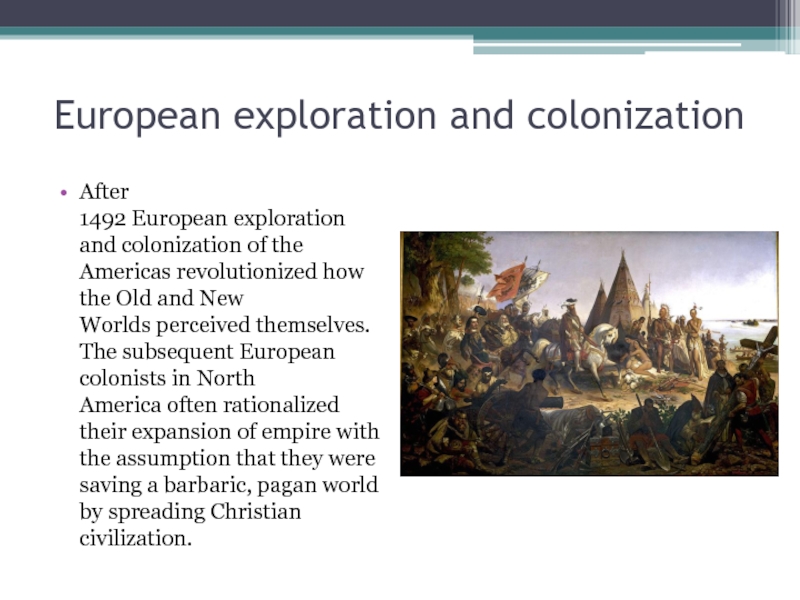
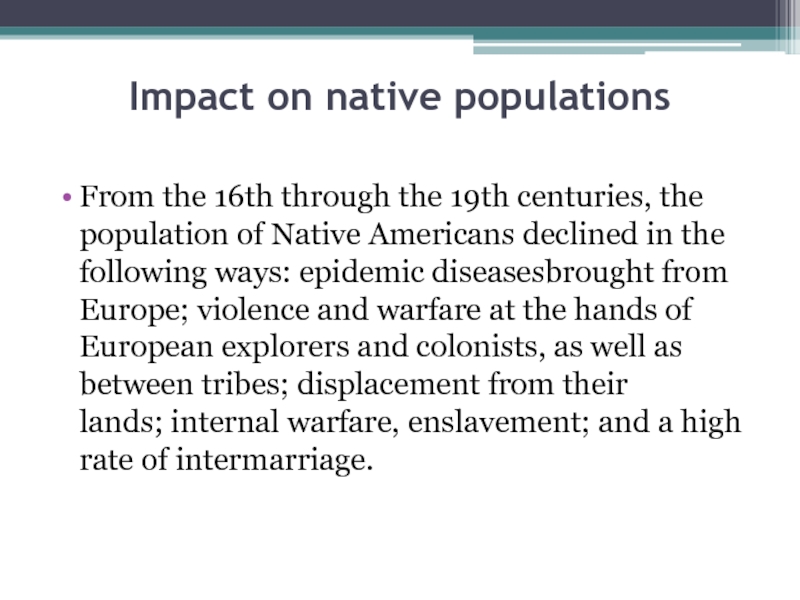
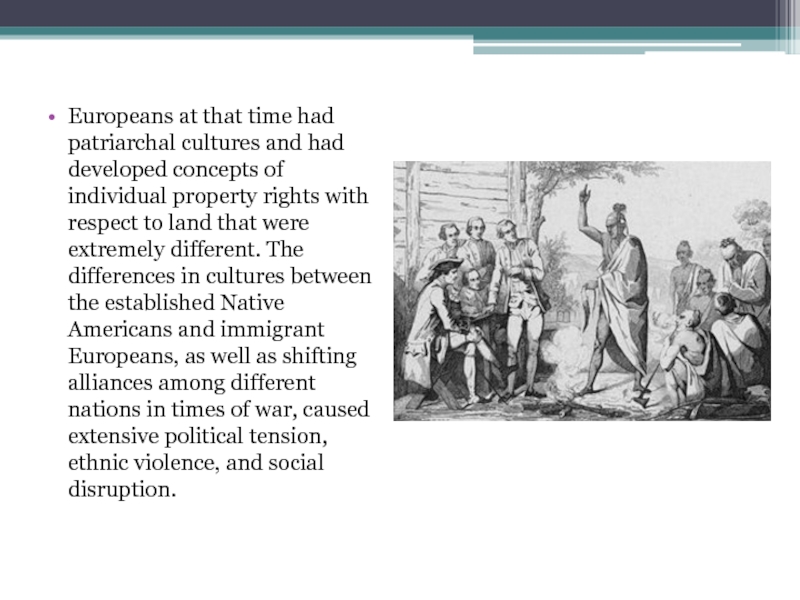
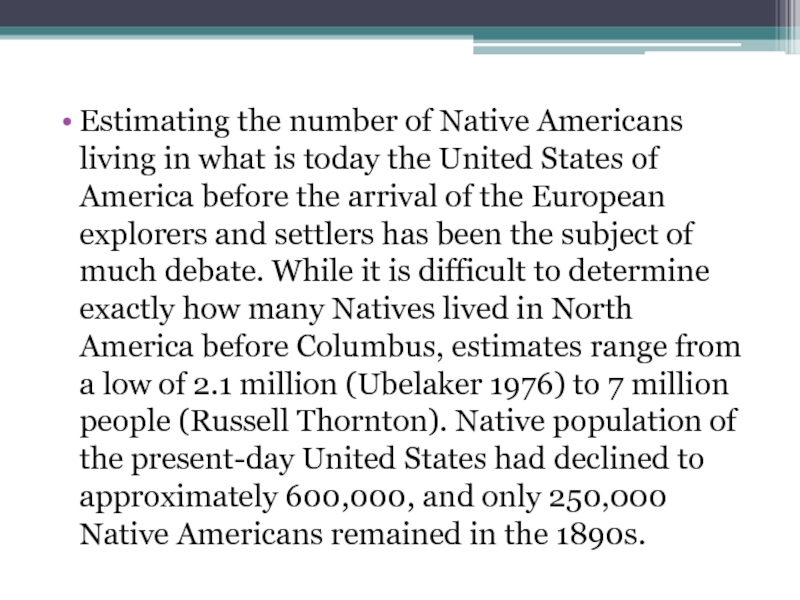
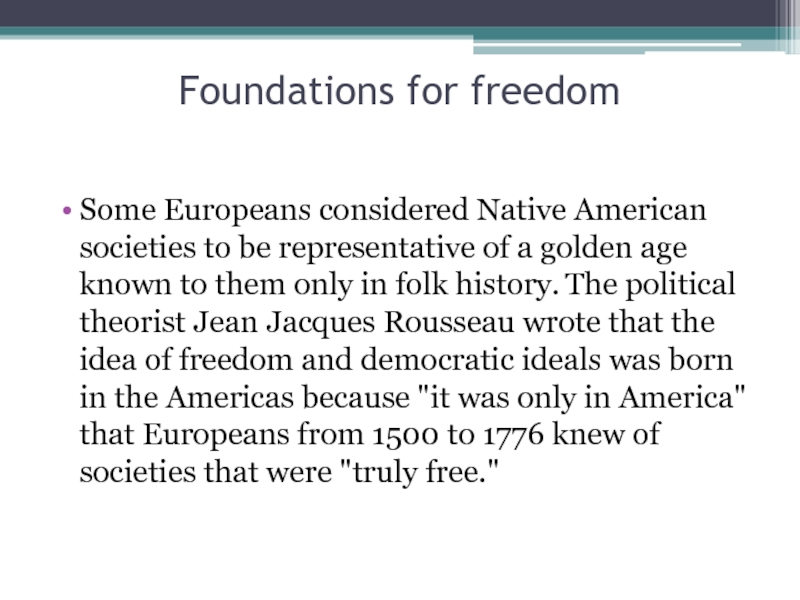
![Natural freedom is the only object of the policy of the [Native Americans]; with this](/img/tmb/2/104090/5daf5c3ca7271793d1d7fd77fa0ab53e-800x.jpg)
